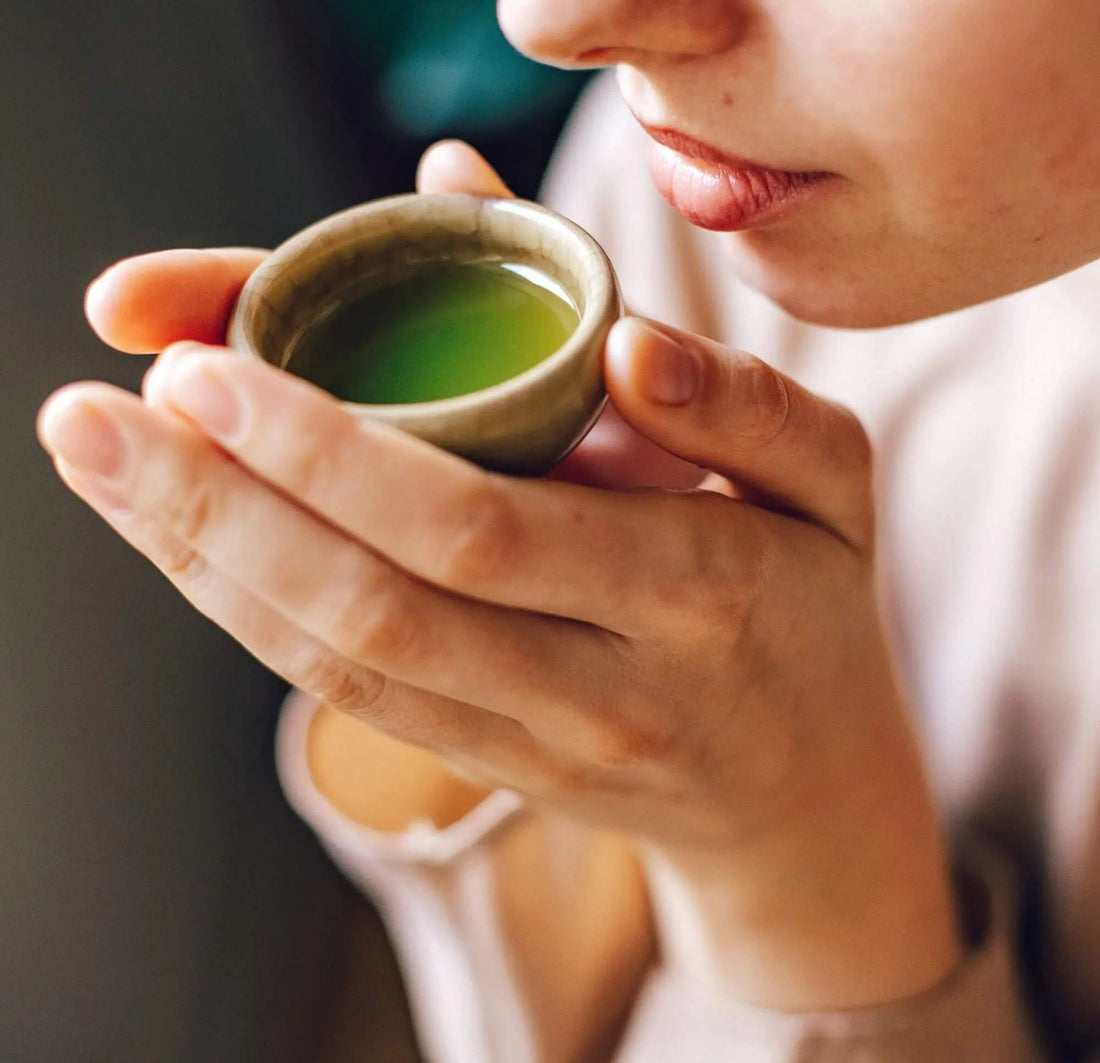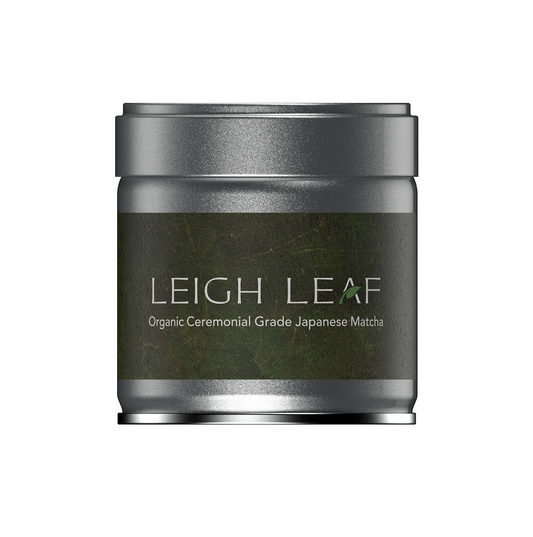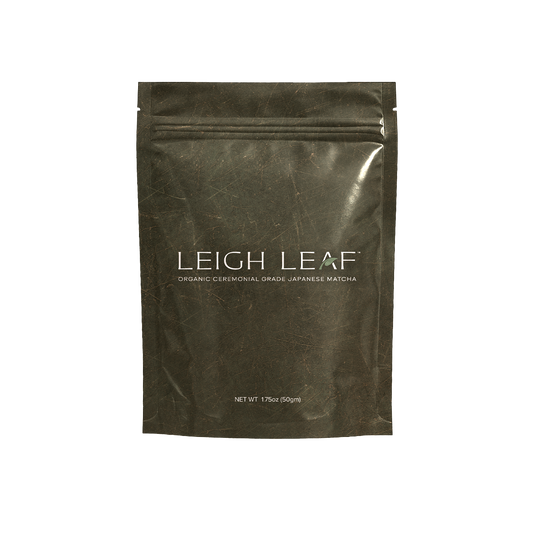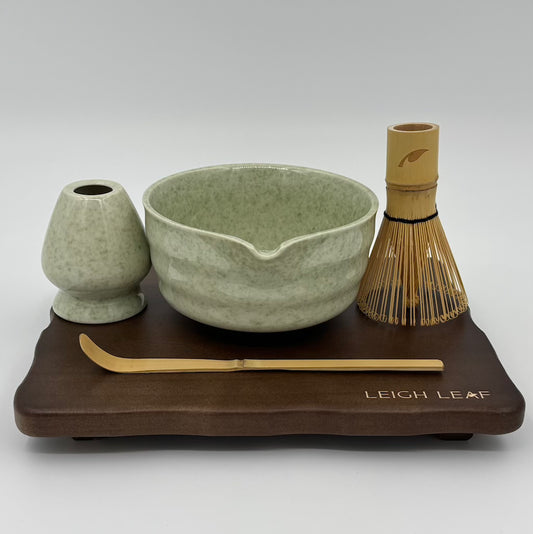
What Does Matcha Smell Like?
Share
Matcha, the vibrant and velvety powdered green tea, has taken the world by storm with its unique flavor and aroma. You might be curious about the scent of this verdant elixir and how it complements its taste. In this article, we're delving deep into the captivating world of matcha to answer the question, "What does matcha smell like?" From the origins of matcha to its health benefits and the factors influencing its aroma, we'll explore every facet of this ancient Japanese treasure.
Table of content
Key Takeaways
- Matcha is a finely ground, shade-grown green tea powder celebrated for its brilliant green color and earthy flavor.
- The scent of matcha is often described as fresh, vegetal, and slightly sweet, with a hint of umami.
- The aroma of matcha is influenced by things like cultivation, processing, and storage.
- Aside from its high antioxidant levels and potential calming properties, matcha is renowned for its health benefits.
- Matcha can be used in a variety of culinary preparations, in addition to beverages and baked goods.
- Knowing how to choose and store matcha is crucial to preserving its aroma and flavor.
- Before we dive into the aromatic world of matcha, let's get acquainted with this exceptional green tea.
Matcha, which is literally translated as "powdered tea" in Japanese, is made from shade-grown tea leaves. Unlike traditional loose-leaf teas, the entire tea leaf is ground into a fine powder, making it one of the most concentrated forms of tea. Matcha is renowned for its brilliant green color and versatility in both traditional tea ceremonies and modern culinary creations.
The Origins of Matcha
Matcha was first used as a medicinal elixir in ancient China. Over time, the art of cultivating and processing matcha traveled to Japan, where it became deeply ingrained in the culture. Matcha was traditionally used in Zen Buddhist rituals, and its consumption gradually spread to wider audiences.
Japanese matcha is renowned for its high-quality production in regions such as Uji, Nishio, and Shizuoka. These areas offer the ideal climate and conditions for cultivating the finest tea leaves, which are essential for creating matcha with a captivating scent and flavor.
How Matcha is Produced?
Understanding how matcha is produced provides insights into its aroma.
Matcha production involves several unique steps:
Shade-Growing: Tea plants are shaded for several weeks before harvesting. Matcha's distinct aroma comes from the shading process, stimulating the growth of tender, flavorful leaves.
Harvesting: Only the youngest, most tender leaves are picked, and the stems and veins are removed, leaving only the leafy parts. These leaves are known as tencha.
Steaming: The tencha leaves are steamed to halt oxidation, preserving their vibrant green color and essential aroma compounds.
Drying: After steaming, the leaves are dried and sorted. Matcha is made by grinding dried leaves into a fine powder.
This meticulous process ensures that matcha retains its unique scent and flavor, capturing the essence of the tea leaves in a concentrated form.
The Health Benefits of Matcha
Matcha isn't just about its captivating aroma and flavor; it also offers a plethora of health benefits.
Antioxidant Richness: Matcha is packed with antioxidants, especially catechins like epigallocatechin gallate (EGCG). Antioxidants help the body combat oxidative stress.
Calming Effect: L-theanine in matcha promotes relaxation without making you sleepy. This is why matcha has a unique ability to provide a sense of alert calm.
Metabolic Boost: L-theanine and matcha caffeine stimulate the body's metabolism.
Nutrient Density: Matcha is a good source of vitamins and minerals, including vitamins A and C, potassium, and dietary fiber.
Detoxification: The chlorophyll content in matcha supports natural detoxification processes in the body.
The Flavor Profile of Matcha
The flavor of matcha is a harmonious blend of sweet, bitter, and umami notes. But what about its scent?
Matcha has an intriguing aroma that is best described as a fusion of freshness, vegetal notes, and a hint of sweetness when you open a fresh tin or packet of it. It's a scent that awakens the senses and prepares you for the rich flavor that awaits.
Imagine a walk through a lush, dew-covered forest with hints of freshly cut grass, spring vegetables, and a subtle sweetness in the air. This is what matcha smells like. The aroma is a prelude to the sensory journey that is about to unfold as you prepare and savor your matcha.
Describing the Scent of Matcha
The scent of matcha, while unique, can be somewhat challenging to describe accurately.
However, let's break it down into its key components:
Freshness: Matcha has a vibrant, fresh scent, like a crisp morning breeze in a forest. Carefully cultivating and processing tea leaves results in freshness.
Vegetal Notes: You can detect subtle vegetal undertones in matcha's aroma. The aroma of thriving plants fills the air, making you feel as though you are in a garden.
Sweetness: The sweetness in matcha's scent is gentle but undeniable. It's not the same sweetness you'd associate with candy but rather a natural, almost floral sweetness.
Umami: Umami, the fifth taste, often described as savory or brothy, is another element of matcha's scent. This adds depth and complexity to the overall aroma of matcha, making it truly multisensory.
When you take a moment to inhale the scent of matcha, you're preparing your palate for the delightful flavor that awaits. It's a unique and captivating experience that sets matcha apart from other teas.
4 Factors Affecting Matcha’s Scent
The aroma of matcha can vary, and several factors influence its scent:
1. Cultivation: The location and environment in which the tea plants are grown play a significant role in determining the scent. Matcha cultivated in nutrient-rich, shaded environments tends to have a more pronounced aroma.
2. Processing: The meticulous process of shading, harvesting, and steaming leaves a lasting impression on the scent of matcha. Well-processed matcha retains its freshness and sweetness.
3. Storage: Proper storage is crucial to preserving matcha's aroma. Exposure to air, light, and heat may cause the scent to fade over time. In an airtight container, matcha should be stored in a cool, dark place.
4. Grade: The grade of matcha also affects its scent. Higher-grade ceremonial matcha often has a more pronounced aroma compared to culinary matcha, which may be used for cooking and baking.
Popular Uses for Matcha
Traditional tea ceremonies are not the only place where matcha can be found. Various culinary creations can be based on this versatile ingredient.
Here are some popular uses for matcha:
Matcha Tea: Of course, the most traditional use of matcha is to prepare a delightful bowl of matcha tea. The scent of matcha shines in this simple, elegant preparation.
Matcha Lattes: In recent years, matcha lattes have become increasingly popular. Matcha's aroma is expertly enhanced by a hint of sweetness and creamy milk.
Baking: Matcha can be used in baking, adding a unique flavor and aroma to cookies, cakes, and pastries.
Smoothies: Matcha adds a nutritious boost to your morning smoothie while infusing it with its captivating scent.
Ice Cream: Matcha-flavored ice cream is a treat for the senses with its vivid green color and aromatic charm.
Cocktails: Mixologists have also embraced matcha, incorporating it into cocktails that delight the palate and the nose.
The possibilities are endless when it comes to incorporating matcha into your culinary adventures, and its scent plays a pivotal role in elevating the overall experience.
How to Choose and Store Matcha
To fully appreciate the captivating scent of matcha, it's crucial to choose and store it correctly.
Choosing Matcha: Opt for high-quality matcha from reputable sources. The color of the green should be vibrant, and the scent should be fresh and sweet. Ceremonial-grade matcha is an excellent choice if you want the most pronounced aroma.
Matcha should be stored in an airtight container to prevent moisture and air from getting into it. Keep it away from direct sunlight and heat in a cool, dark place. Aromas and flavors will be preserved this way.
Use It Promptly: Matcha is best enjoyed fresh, so try to use it within a few months of purchase to savor its full aroma and flavor.
Conclusion
In the world of tea, matcha stands out as a remarkable and aromatic treasure. Its vibrant green color, unique flavor, and captivating scent make it a sought-after indulgence for both tea enthusiasts and culinary aficionados.
To answer the question, "How does matcha smell?" It smells like a breath of fresh, green air with subtle vegetal notes, a touch of sweetness, and a hint of umami. It's an aroma that prepares your senses for the delightful journey that is matcha.
Whether you enjoy it in a traditional tea ceremony, a modern matcha latte, or as an ingredient in your favorite recipes, the scent of matcha will always be a prelude to a multisensory experience that you won't soon forget.
Let matcha's aromatic charm transport you to a world of green elegance and sensory pleasure. Learn more about Matcha by visiting Leigh Leaf.
Frequently Asked Questions:
Can Matcha Be Used in Savory Dishes?
Absolutely! In addition to adding depth and complexity to savory dishes, matcha's unique flavor and scent can enhance them as well. It can be used to season meats, in sauces, or even to make a delicious matcha-infused risotto.
How Long Does the Scent of Matcha Typically Last?
There are many factors that affect the scent of matcha, including the quality of the tea and how it is stored. High-quality matcha stored correctly can maintain its scent for several months, providing you with a delightful olfactory experience each time you open the container.
Does the Grade of Matcha Affect Its Scent?
Yes, the grade of matcha can impact its scent. Higher-grade ceremonial matcha often has a more pronounced and complex aroma compared to culinary-grade matcha, which may have a milder scent. Based on your preferences and intended use, you need to choose the right grade.




